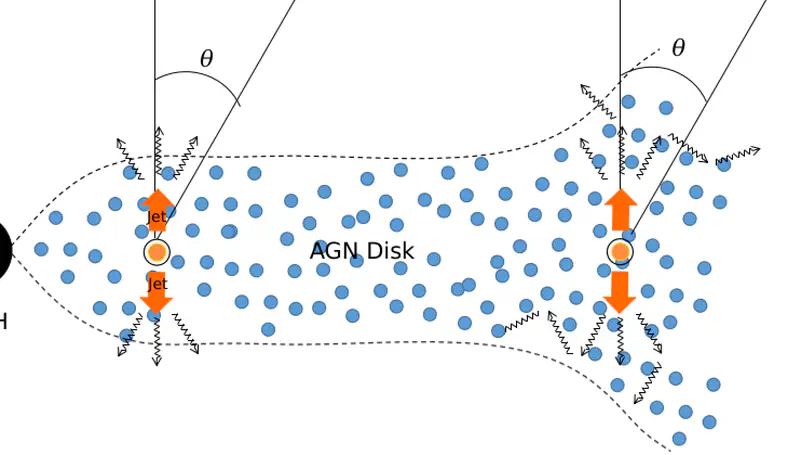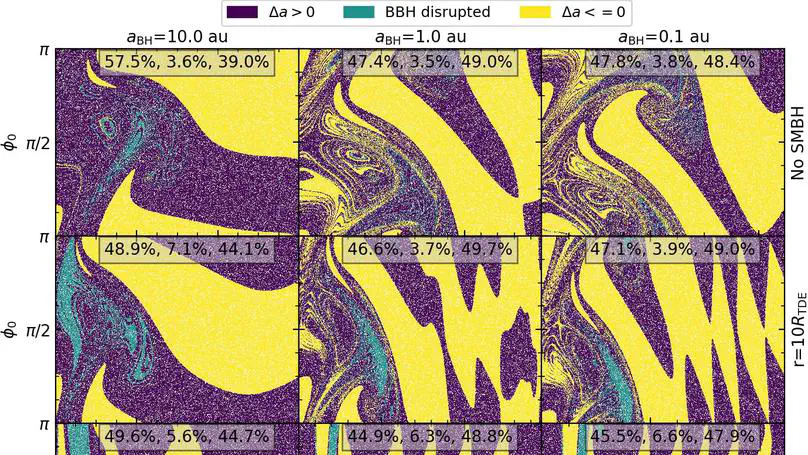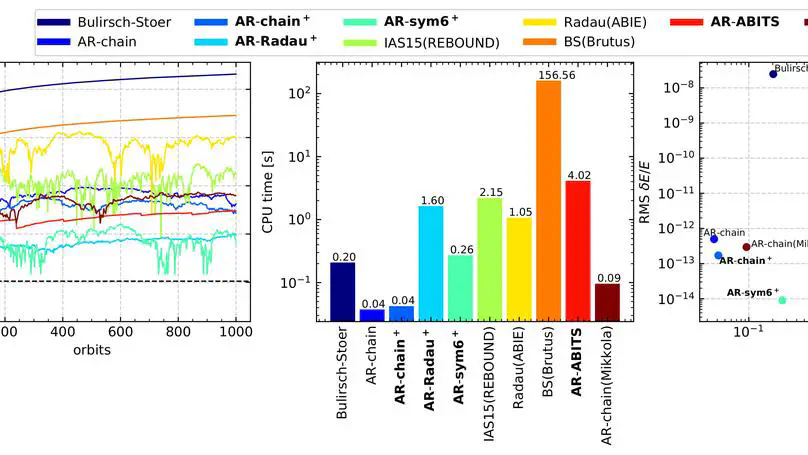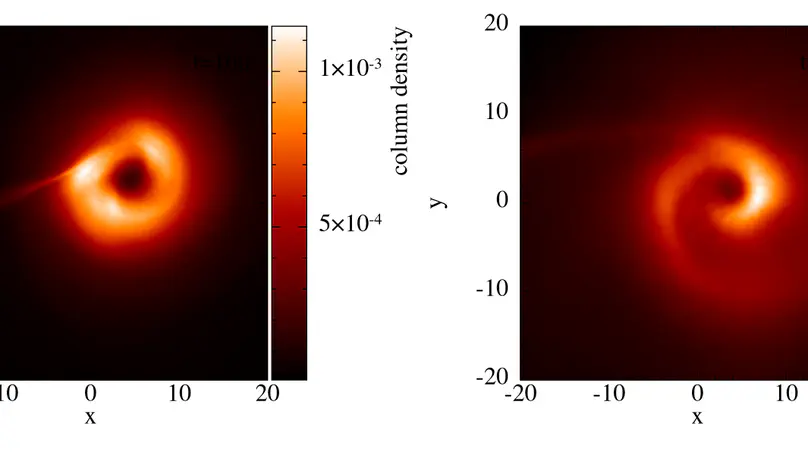Biography
I am currently a Postdoc Research Associate in the Department of Astronomy at the University of Wisconsin-Madison, working with Nick Stone. Prior to my current position, I was a Fellow at the Nevada Center for Astrophysics (NCfA) at UNLV, where I collaborated with Bing Zhang and Zhaohuan Zhu. I pursued my PhD at Stony Brook University under Rosalba Perna.
I am a dynamicist interested in stellar dynamics in AGN, formation of free-floating planets and planet binaries, tidal disruption events associated with AGNs, and planetary systems in star clusters. In addition to my research pursuits, I have a keen interest in astrophysics software development, including the development of VegasAfterglow, a high-performance C++ framework for gamma-ray burst afterglow modeling, and SpaceHub, a high-precision few-body integration toolkit.
Download my CV .
- Stellar dynamics in AGN
- Formation of free-floating planets and planet binaries
- Tidal disruption events associated with AGNs
- Planetary systems in star clusters
- N-body code algorithm development
-
PhD in Physics, 2022
Stony Brook University
-
BS in Physics, 2015
University of Science & Technology of China
VegasAfterglow
VegasAfterglow is a high-performance C++ framework for gamma-ray burst afterglow modeling with Python bindings, delivering ultra-fast light curve computations in milliseconds and rapid MCMC parameter inference. The framework provides comprehensive modeling capabilities with key features including:
Shock Dynamics:
- Forward and reverse shock modeling across relativistic and non-relativistic regimes
- Adiabatic and radiative blast wave solutions
- Support for various ambient medium types with energy and mass injection
Jet Structure & Geometry:
- Structured jet profiles with arbitrary viewing angles
- Jet spreading dynamics and non-axisymmetric structures
- Complex geometric configurations for realistic modeling
Radiation Mechanisms:
- Synchrotron radiation with self-absorption (SSA)
- Inverse Compton scattering including synchrotron self-Compton (SSC)
- Pairwise IC between shock populations with Klein-Nishina corrections
GitHub Repository Install via PyPI

SpaceHub
SpaceHub utilizes unique algorithms for fast, precise, and accurate computations for few-body problems, ranging from interacting black holes to planetary dynamics. This few-body gravity integration toolkit can treat black hole dynamics with extreme mass ratios, extreme eccentricities, and very close encounters. SpaceHub offers a variety of integrators with round-off error controls and can handle extremely eccentric orbits and close approaches in long-term integrations.
Fork SpaceHub Github Repository
About me
Drawing
Aside from my scientific endeavors, I have a deep appreciation for the art and architecture of my hometown, Chongqing, known for its ancient Chinese-style buildings nestled in the mountainous terrain of southwest China. This passion, particularly evident in my sketches of iconic locales like ‘HongYa Dong’, stems from a childhood surrounded by the city’s rich cultural background.
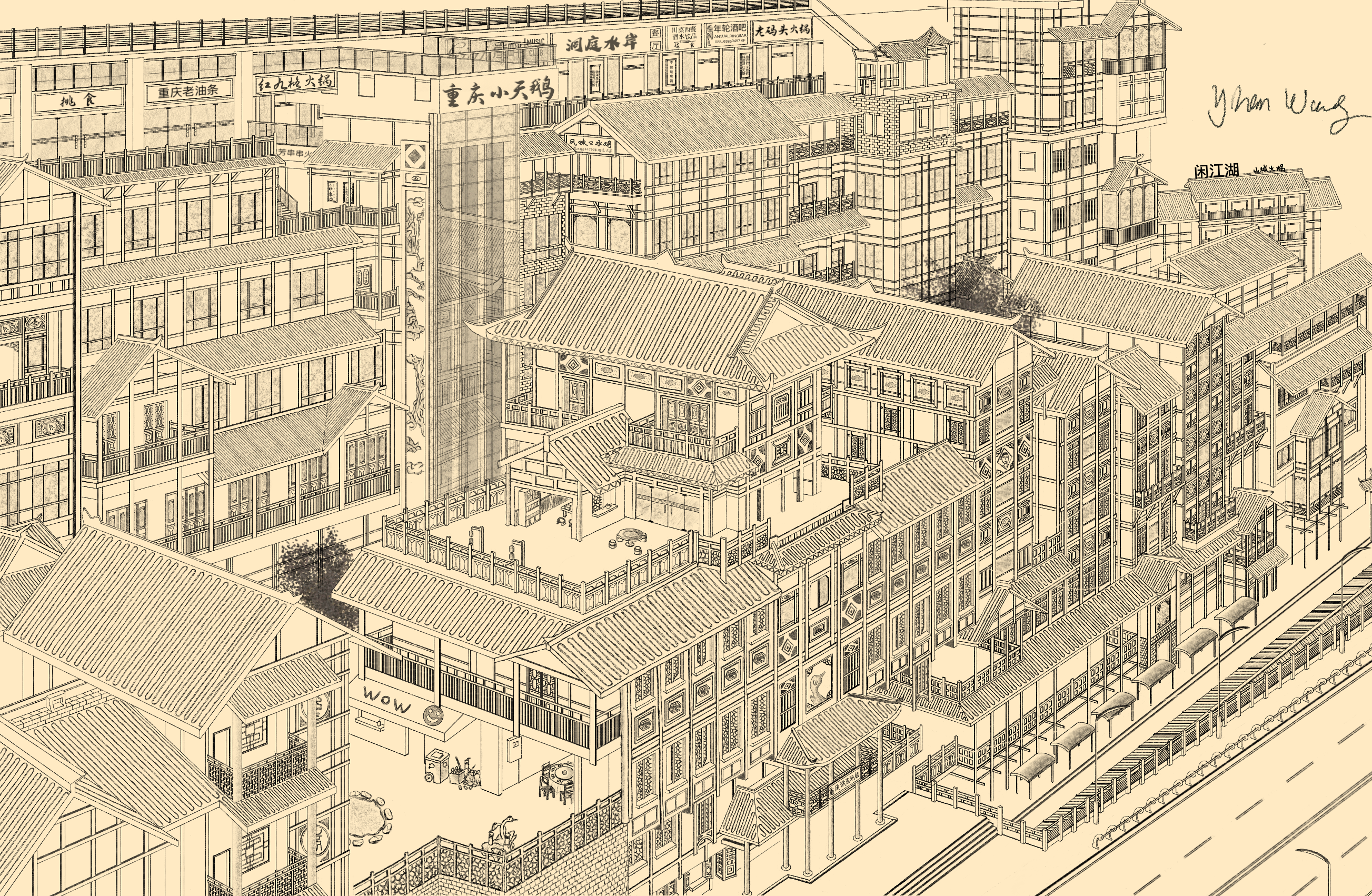
Skiing
During my second year of Ph.D. studies, I tried skiing for the first time. Despite a bumpy start that led to a quick meeting with the first-aid patrol, I found myself hooked. It was a surprising but welcomed discovery, offering a hobby that was just challenging and rewarding.
As time went on, skiing became more than just a pastime. It turned into a regular activity where I could see and feel myself getting better, one ski trip at a time. The sense of progress and the fun of speeding down the slopes kept pulling me back.
Even though I started skiing in the US, I became quite interested in the approach of the Canadian Ski Instructors’ Alliance (CSIA) in Canada. Their focus on constant growth and skill development really clicked with me, mirroring my own experiences and enjoyment in the sport.
Now, I’m working slowly towards meeting the Level III certification standard from CSIA, a goal that highlights the commitment and enjoyment I’ve found in skiing over the years.
In the following video, I’ve captured one of my ski seasons with my mates before the pandemic struck. It was a time of camaraderie, laughter, and the simple joy of cruising down the slopes with friends. You can spot me easily – I’m the guy sporting the unmistakably yellow pants.
Research Posts
Jupiter Mass Binary Object (JuMBO) formation from stellar flybys
This work has been motivated by the very recent report of observations by the James Webb Space Telescope (JWST) of candidate Jupiter-Mass Binary Objects (a.k.a JuMBO), whose existence does not readily fits in any current planetary formation theory. More specifically, via dedicated N-body simulations, we set to investigate the possibility that a close flyby can result in the ejection of two planets in outer orbits, which remain bound to one another. The mass ratio between the star and planet in the scattering experiments is set to be 1e-3.
1. JuMBO formation from face-on scattering.
2. JuMBO formation from edge-on scattering.
3. Outer Jupiter ejection.
4. Inner Jupiter ejection.
5. Double ejections.
6. Outer Jupiter capture.
7. Inner Jupiter capture.
8. Double captures.
Recent Publications
Talks
Recent Invited Talks & Presentations
2024
- Transient Phenomena and Physical Processes Around Supermassive Black Holes (invited) - October 2024
- 50 years of Binaries and Disks: Lubow@75 - April 2024
- Anticipating the Rising Tide of Tidal Disruption Events, KITP - April 2024
2023
- Graduate Seminar, Nanjing University (invited) - June 2023
- AGN Santafe Conference, Los Alamos National Lab (invited) - March 2023
- Graduate Seminar, Stony Brook University (invited) - February 2023
- Astro-coffee, IAS, Princeton University (invited) - February 2023
- Bahcall lunch talk, IAS, Princeton University (invited) - February 2023
2022
- Graduate Seminar, Georgia Institute of Technology (invited) - September 2022
- 53rd Annual DDA Meeting, CCA, Flatiron Institute - April 2022
2021
- Astrophysics seminar, University of the Balearic Islands (invited) - October 2021
- Planet formation group meeting, CCA, Flatiron Institute - October 2021
- Astronomy Seminar, Universidad de Concepción (invited) - September 2021
- Astronomy Seminar, Stony Brook University - August 2021
- Compact Object Group meeting, CCA, Flatiron Institute - March 2021
2018
- Astronomy Seminar, American Museum of Natural History - August 2018
- Astronomy Group meeting, Cornell University (invited) - June 2018

